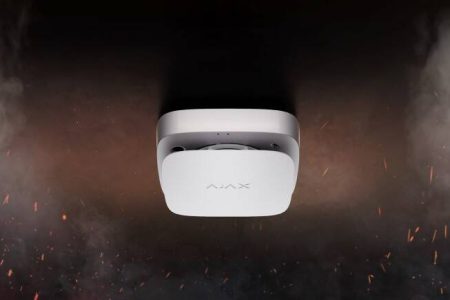How oil and gas companies can maximise on-site safety with innovative technology including smart video surveillance and artifical intelligence
Oil and gas companies face unique challenges keeping their assets and employees safe, especially at locations where flammable liquids and gases are extracted, stored, or transported. To help oil and gas companies boost security and maximise health and safety for their employees, security solutions including video surveillance and flare detection are some of the most effective and popular choices.
Organisations operating in the oil and gas industry face a unique set of safety and security challenges. The flammable nature of hydrocarbons and the high operating temperatures of on-site equipment, for example, mean that fires and explosion risks are ever-present.
Oil and gas companies also tend to operate dispersed, standalone work sites, often in remote locations. This means that highly effective perimeter protection solutions are needed to minimise the risk of vandalism, unauthorised intrusions, and other security breaches.
What’s more, the remote nature of many oil and gas installations means that finding skilled workers can be difficult. For this reason, security and safety solutions that protect such worksites with their equipment and employees must be automated as much as possible.
Oil and gas challenges
To address the unique safety and security challenges of the oil and gas industry, automated security and equipment monitoring solutions are one of the primary solutions. Manufacturers like Hikvision and Azena for example have solutions that combine smart video technologies, including high-resolution optical lenses, thermal imaging capabilities, and AI to protect sites, assets, and employees, as well as to improve operational efficiency for users.
Equipment monitoring and maintenance
Smart video surveillance can be deployed to monitor equipment and machinery at oil and gas exploration sites, processing plants, and in oil and gas fields. In particular, thermal cameras can be used to detect whether equipment is functioning normally, and whether operating temperatures are within safe limits.
If equipment is running hot, or fire or explosion risks are detected, automated alerts can be sent to security teams in real time to support a fast, effective response that maximises safety and minimises the risk of disruption and damage.
Key performance and safety benefits include:
- Improved reactive and proactive maintenance for increased production efficiency, with equipment performance data provided via analytics dashboard 24/7.
- Reduced fire and explosion risks by AI analysis and detection of equipment temperatures, leaks, flares, etc.
- Maximum equipment uptime and productivity with reduced manual patrols and troubleshooting requirements.
Enhancing 24/7 perimeter security
Smart surveillance solutions that report and alert in real time to security teams and control rooms, allow organisations to ensure that only authorised people and vehicles enter sites, minimising the risk of security breaches. In particular, AI algorithms built into cameras support automated functions – such as license plate recognition and vehicle and human recognition – to ensure that no unauthorised visitors are admitted.
Another key feature of smart perimeter protection solutions for oil and gas are the AI features that distinguish between genuine security threats and false alarms, such as animals, falling leaves, heavy rain, and other moving objects. This allows security teams to focus on real threats and to minimise the time and workloads associated with investigating false alarms…
To read the full exclusive see our latest issue here.
Never miss a story… Follow us on:
![]() Security Buyer
Security Buyer
![]() @SecurityBuyer
@SecurityBuyer
![]() @Secbuyer
@Secbuyer
Media Contact
Rebecca Morpeth Spayne,
Editor, Security Portfolio
Tel: +44 (0) 1622 823 922
Email: editor@securitybuyer.com













